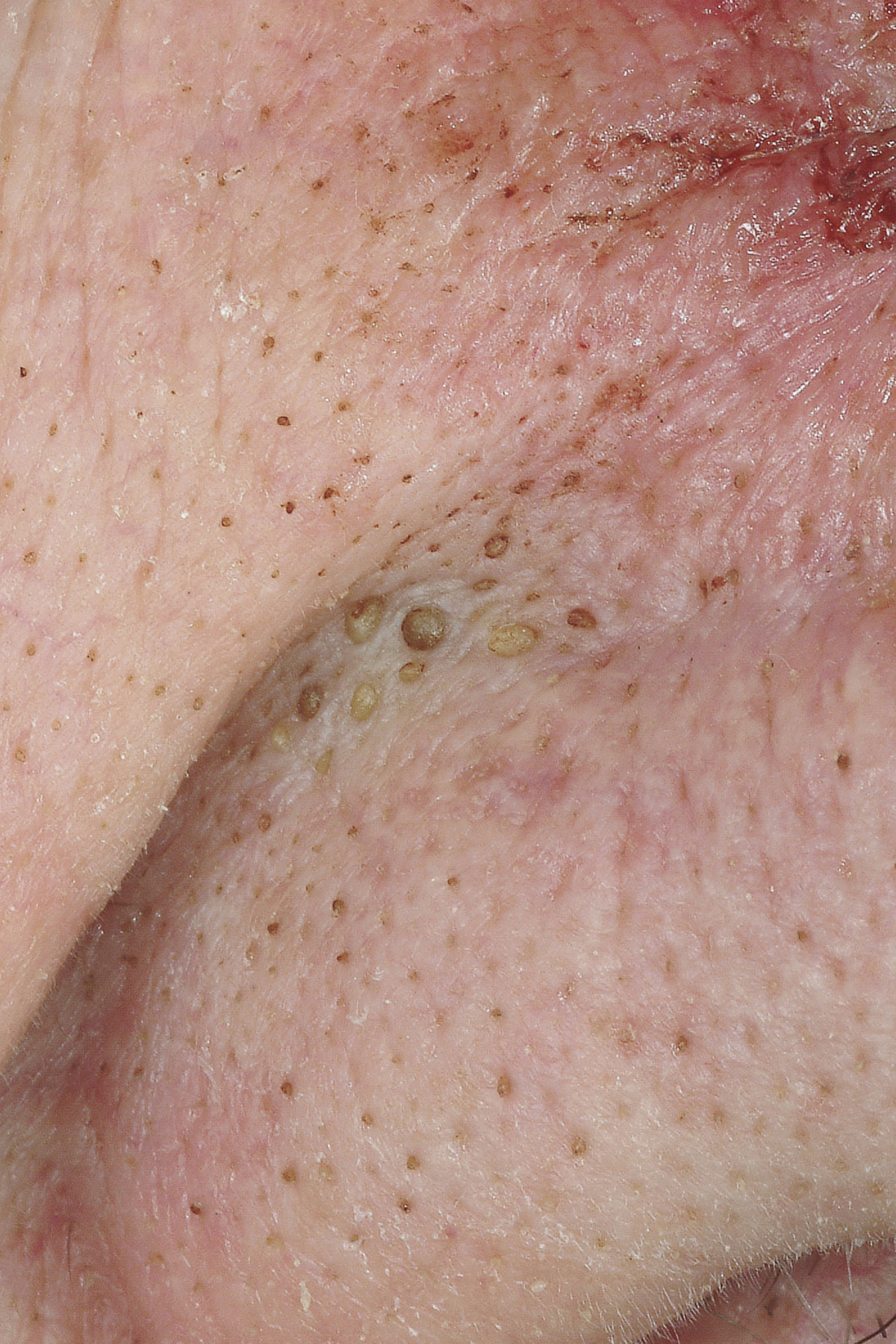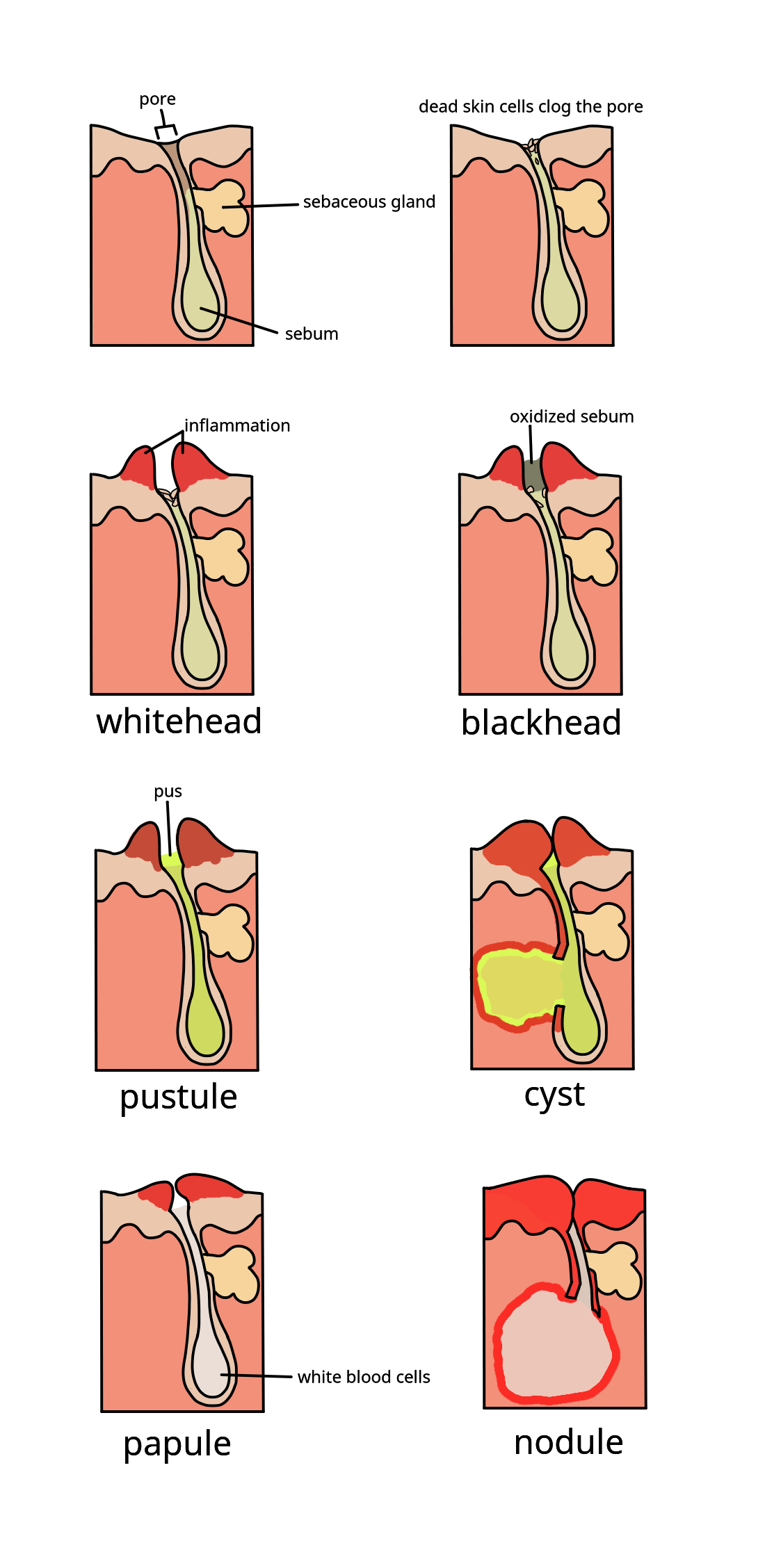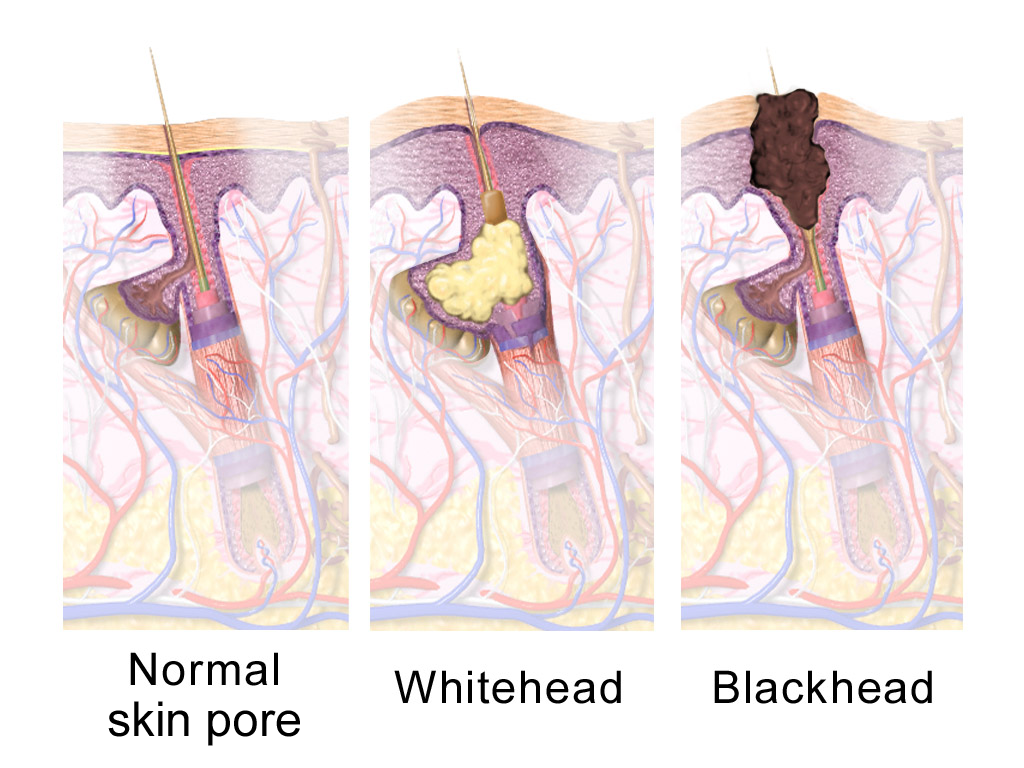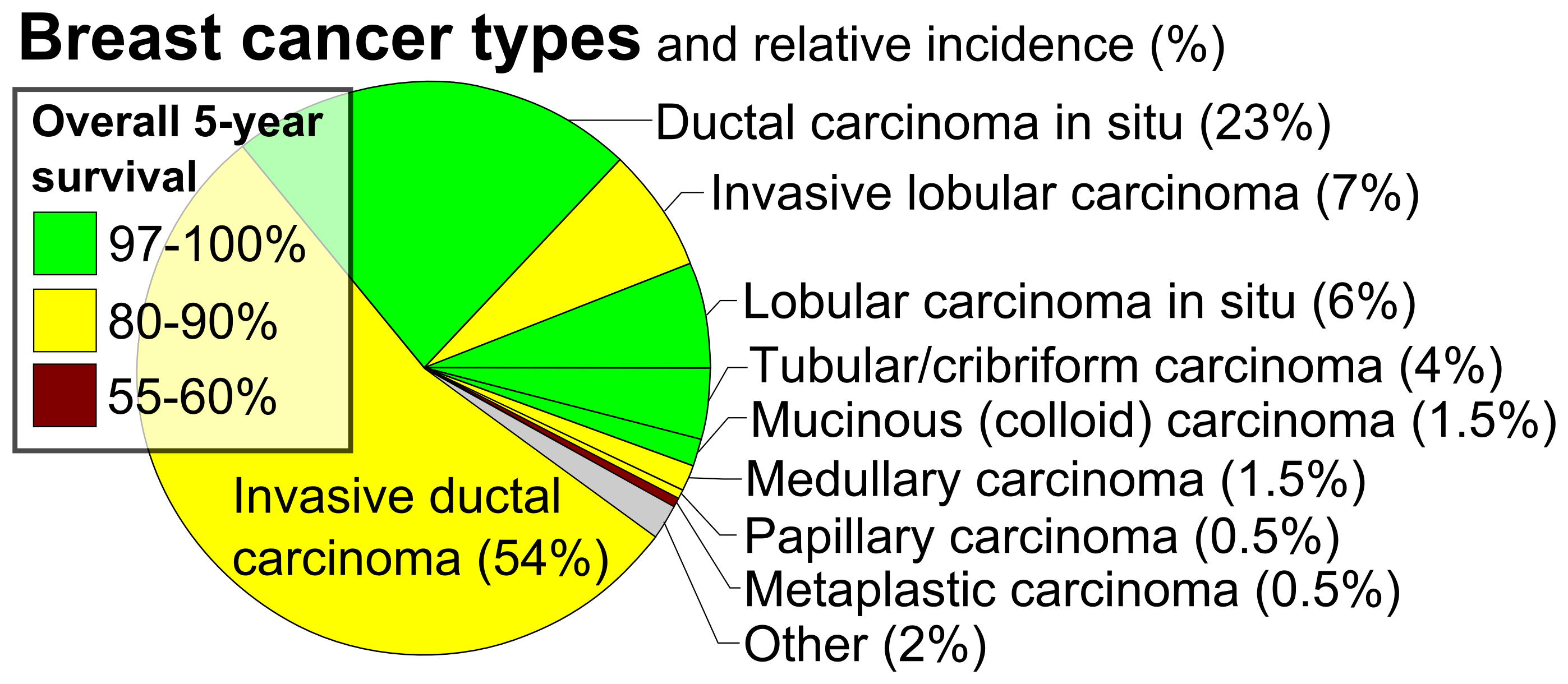|
Comedone
A comedo (plural comedones) is a clogged hair follicle (pore) in the skin. Keratin (skin debris) combines with oil to block the follicle. A comedo can be open (blackhead) or closed by skin (whitehead) and occur with or without acne. The word ''comedo'' comes from Latin ''comedere'' 'to eat up' and was historically used to describe parasitic worms; in modern medical terminology, it is used to suggest the worm-like appearance of the expressed material. The chronic inflammatory condition that usually includes comedones, inflamed papules, and pustules (Pimple, pimples) is called acne. Infection causes inflammation and the development of pus. Whether a skin condition classifies as acne depends on the number of comedones and infection. Comedones should not be confused with sebaceous filaments. Comedo-type ductal carcinoma in situ, ductal carcinoma ''in situ'' (DCIS) is not related to the skin conditions discussed here. DCIS is a noninvasive form of breast cancer, but comedo-type DCIS ma ... [...More Info...] [...Related Items...] OR: [Wikipedia] [Google] [Baidu] |
Acne
Acne ( ), also known as ''acne vulgaris'', is a long-term Cutaneous condition, skin condition that occurs when Keratinocyte, dead skin cells and Sebum, oil from the skin clog hair follicles. Typical features of the condition include comedo, blackheads or whiteheads, pimples, oily skin, and possible scarring. It primarily affects skin with a relatively high number of sebaceous gland, oil glands, including the face, upper part of the chest, and back. The resulting appearance can lead to lack of confidence, anxiety (mood), anxiety, reduced self-esteem, and, in extreme cases, clinical depression, depression or suicidal ideations, thoughts of suicide. Susceptibility to acne is primarily genetic in 80% of cases. The roles of diet and cigarette smoking in the condition are unclear, and neither hygiene, cleanliness nor exposure to sunlight are associated with acne. In both sexes, hormones called androgens appear to be part of the underlying mechanism, by causing increased production ... [...More Info...] [...Related Items...] OR: [Wikipedia] [Google] [Baidu] |
Azelaic Acid
Azelaic acid (AzA), or nonanedioic acid, is an organic compound with the formula HOOC(CH2)7carboxylic acid, COOH. This saturated dicarboxylic acid exists as a white powder. It is found in wheat, rye, and barley. It is a precursor to diverse industrial products including polymers and plasticizers, as well as being a component of several hair and skin conditioners. AzA inhibits tyrosinase. Production Azelaic acid is industrially produced by the ozonolysis of oleic acid. The side product is nonanoic acid. It is produced naturally by ''Malassezia furfur'' (also known as ''Pityrosporum ovale''), a yeast that lives on normal skin. The bacterial degradation of Pelargonic acid, nonanoic acid gives azelaic acid. Biological function Plants biology In plants, azelaic acid serves as a "distress flare" involved in defense responses after infection. It serves as a signal that induces the accumulation of salicylic acid, an important component of a plant's defensive response. Human biology Th ... [...More Info...] [...Related Items...] OR: [Wikipedia] [Google] [Baidu] |
Sebaceous Glands
A sebaceous gland or oil gland is a microscopic exocrine gland in the skin that opens into a hair follicle to secrete an oily or waxy matter, called sebum, which lubricates the hair and skin of mammals. In humans, sebaceous glands occur in the greatest number on the face and scalp, but also on all parts of the skin except the palms of the hands and soles of the feet. In the eyelids, meibomian glands, also called tarsal glands, are a type of sebaceous gland that secrete a special type of sebum into tears. Surrounding the female nipples, areolar glands are specialized sebaceous glands for lubricating the nipples. Fordyce spots are benign, visible, sebaceous glands found usually on the lips, gums and inner cheeks, and genitals. Structure Location In humans, sebaceous glands are found throughout all areas of the skin, except the palms of the hands and soles of the feet. There are two types of sebaceous glands: those connected to hair follicles and those that exist indepen ... [...More Info...] [...Related Items...] OR: [Wikipedia] [Google] [Baidu] |
Cutibacterium Acnes
''Cutibacterium acnes'' (''Propionibacterium acnes'') is the relatively slow-growing, typically aerotolerant anaerobic, gram-positive bacterium (rod) linked to the skin condition of acne; it can also cause chronic blepharitis and endophthalmitis, the latter particularly following intraocular surgery. Its genome has been sequenced and a study has shown several genes can generate enzymes for degrading skin and proteins that may be immunogenic (activating the immune system). The species is largely commensal and part of the skin flora present on most healthy adult humans' skin. It is usually just barely detectable on the skin of healthy preadolescents. It lives, among other things, primarily on fatty acids in sebum secreted by sebaceous glands in the follicles. It may also be found throughout the gastrointestinal tract. Originally identified as ''Bacillus acnes'', it was later named ''Propionibacterium acnes'' for its ability to generate propionic acid. In 2016, ''P. acnes'' was ... [...More Info...] [...Related Items...] OR: [Wikipedia] [Google] [Baidu] |
Sebaceous Gland
A sebaceous gland or oil gland is a microscopic exocrine gland in the skin that opens into a hair follicle to secrete an oily or waxy matter, called sebum, which lubricates the hair and skin of mammals. In humans, sebaceous glands occur in the greatest number on the face and scalp, but also on all parts of the skin except the palms of the hands and soles of the feet. In the eyelids, meibomian glands, also called tarsal glands, are a type of sebaceous gland that secrete a special type of sebum into tears. Surrounding the female nipples, areolar glands are specialized sebaceous glands for lubricating the nipples. Fordyce spots are benign, visible, sebaceous glands found usually on the lips, gums and inner cheeks, and genitals. Structure Location In humans, sebaceous glands are found throughout all areas of the skin, except the palms of the hands and soles of the feet. There are two types of sebaceous glands: those connected to hair follicles and those that ex ... [...More Info...] [...Related Items...] OR: [Wikipedia] [Google] [Baidu] |
Pilosebaceous Unit
A sebaceous gland or oil gland is a microscopic exocrine gland in the skin that opens into a hair follicle to secrete an oily or waxy matter, called sebum, which lubricates the hair and skin of mammals. In humans, sebaceous glands occur in the greatest number on the face and scalp, but also on all parts of the skin except the palms of the hands and soles of the feet. In the eyelids, meibomian glands, also called tarsal glands, are a type of sebaceous gland that secrete a special type of sebum into tears. Surrounding the female nipples, areolar glands are specialized sebaceous glands for lubricating the nipples. Fordyce spots are benign, visible, sebaceous glands found usually on the lips, gums and inner cheeks, and genitals. Structure Location In humans, sebaceous glands are found throughout all areas of the skin, except the palms of the hands and soles of the feet. There are two types of sebaceous glands: those connected to hair follicles and those that exi ... [...More Info...] [...Related Items...] OR: [Wikipedia] [Google] [Baidu] |
Sebum
A sebaceous gland or oil gland is a microscopic exocrine gland in the skin that opens into a hair follicle to secrete an oily or waxy matter, called sebum, which lubricates the hair and skin of mammals. In humans, sebaceous glands occur in the greatest number on the face and scalp, but also on all parts of the skin except the palms of the hands and soles of the feet. In the eyelids, meibomian glands, also called tarsal glands, are a type of sebaceous gland that secrete a special type of sebum into tears. Surrounding the female nipples, areolar glands are specialized sebaceous glands for lubricating the nipples. Fordyce spots are benign, visible, sebaceous glands found usually on the lips, gums and inner cheeks, and genitals. Structure Location In humans, sebaceous glands are found throughout all areas of the skin, except the palms of the hands and soles of the feet. There are two types of sebaceous glands: those connected to hair follicles and those that ... [...More Info...] [...Related Items...] OR: [Wikipedia] [Google] [Baidu] |
Ductal Carcinoma In Situ
Ductal carcinoma ''in situ'' (DCIS), also known as intraductal carcinoma, is a pre-cancerous or non-invasive cancerous lesion of the breast. DCIS is classified as Breast cancer classification#Stage, Stage 0. It rarely produces symptoms or a breast lump that can be felt, typically being detected through screening mammography. It has been diagnosed in a significant percentage of men (see male breast cancer). In DCIS, abnormal cells are found in the lining of one or more milk ducts in the breast. ''In situ'' means "in place" and refers to the fact that the abnormal cells have not moved out of the mammary duct and into any of the surrounding tissues in the breast ("pre-cancerous" indicates that it has not yet become an invasive cancer). In some cases, DCIS may become invasive and spread to other tissues, but there is no way of determining which lesions will remain stable without treatment, and which will go on to become invasive. DCIS encompasses a wide spectrum of diseases rang ... [...More Info...] [...Related Items...] OR: [Wikipedia] [Google] [Baidu] |
Pore Strips
Pore may refer to: Biology Animal biology and microbiology * Sweat pore, an anatomical structure of the skin of humans (and other mammals) used for secretion of sweat * Hair follicle, an anatomical structure of the skin of humans (and other mammals) used for secretion of sebum * Canal pore, an anatomical structure that is part of the lateral line sense system of some aquatic organisms * Gonopore, a genital pore present in some invertebrates, particularly insects * Ozopore, the external discharge site of defensive glands in millipedes and some arachnids * An opening across both inner and outer bacterial membranes, a part of many Gram-negative bacterial secretion systems * One of the openings communicating with the skin surface at the terminus of lactiferous ducts in milk-producing mammals Plant and fungal biology * Germ pore, a small pore in the outer wall of a fungal spore through which the germ tube exits upon germination * Stoma, a small opening on a plant leaf used for g ... [...More Info...] [...Related Items...] OR: [Wikipedia] [Google] [Baidu] |
Retinoid
The retinoids are a class of chemical compounds that are natural derivatives of vitamin A or are chemically related to it. Synthetic retinoids are utilized in cosmetic formulations, clinical dermatology, and the treatment of some forms of cancer. Retinoids have many important functions throughout the body, including in vision, regulation of skin proliferation and differentiation, growth of bone tissue, immune function, and male fertility. The biology of retinoids is complex, having well-documented effectiveness in the management of conditions ranging from acute promyelocytic leukemia to acne to photoaging. On the other hand, retinoids may be involved in metabolic dysfunction and, at least in some forms, carcinogenesis. Types Retinoids are divided into four generations based on their molecular structure and receptor selectivity. Structure The basic structure of the hydrophobic retinoid molecule consists of a cyclic end group, a polyene side chain and a polar end group. Th ... [...More Info...] [...Related Items...] OR: [Wikipedia] [Google] [Baidu] |
Isotretinoin
Isotretinoin, also known as 13-''cis''-retinoic acid and sold under the brand name Accutane among others, is a medication used to treat skin diseases like harlequin-type ichthyosis, and lamellar ichthyosis, and severe cystic acne or moderate acne that is unresponsive to antibiotics. Isotretinoin is used off-label to treat basal cell carcinoma and squamous cell carcinoma, although clinical evidence suggests it is not effective in this setting. It is a retinoid, meaning it is related to vitamin A, and is found in small quantities naturally in the body. Its isomer, tretinoin, is also an acne drug. The most common adverse effects are dry lips ( cheilitis), dry and fragile skin ( xeroderma), dry eyes and an increased susceptibility to sunburn. Uncommon and rare side effects include muscle aches and pains ( myalgias), and headaches. Some of those side effects can persist long after the discontinuation of the use of the drug. Isotretinoin may cause liver failure, therefore th ... [...More Info...] [...Related Items...] OR: [Wikipedia] [Google] [Baidu] |





